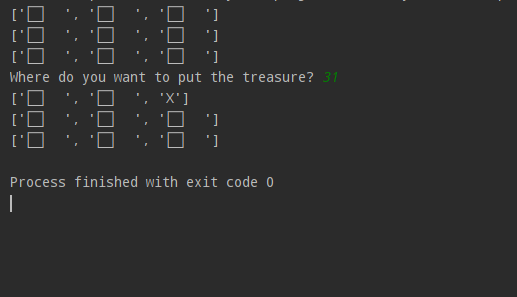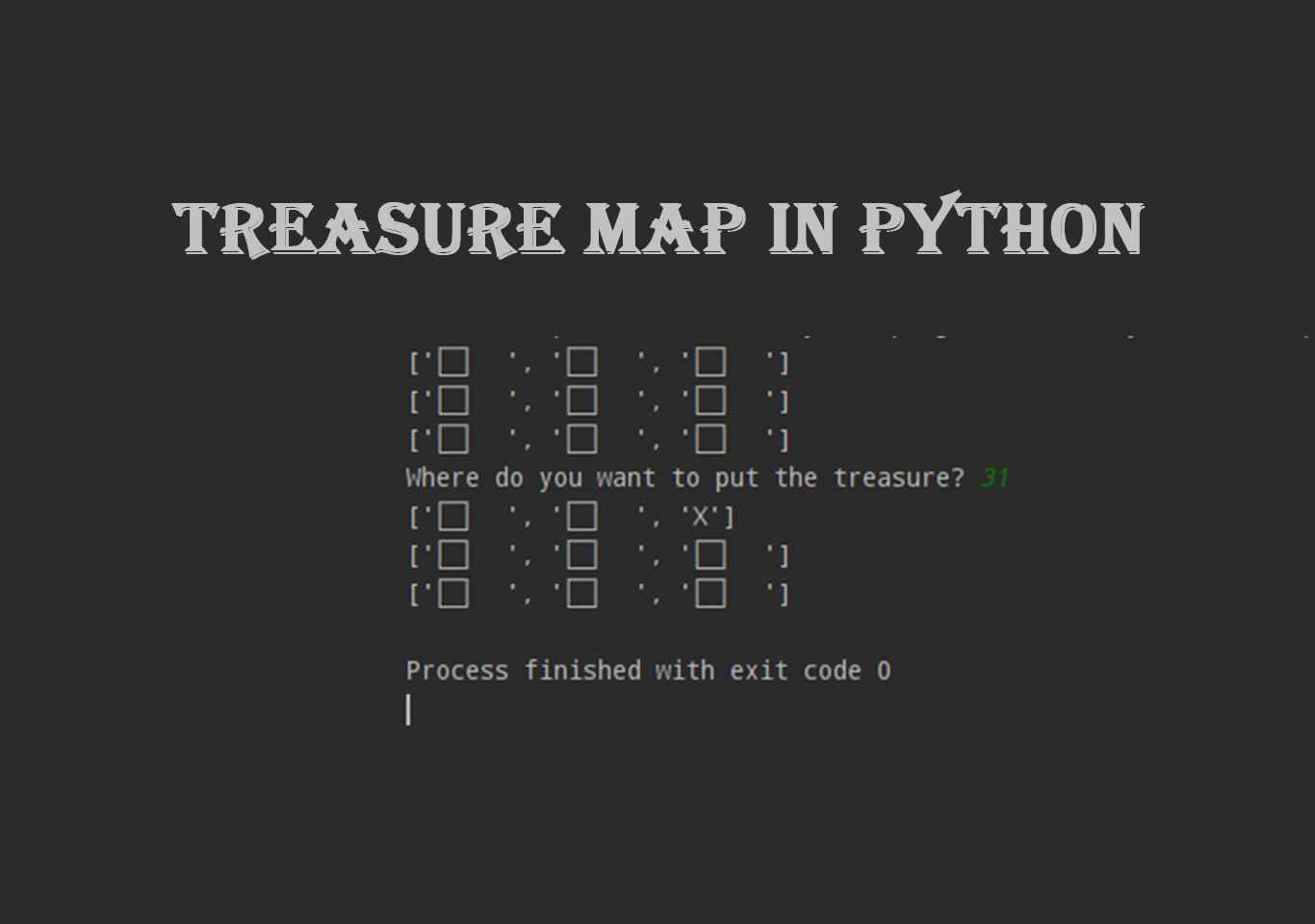Introduction
A treasure map in Python is a fun and interactive coding project that teaches beginners about basic programming concepts such as lists, loops, conditionals, and user input.
Treasure map is a Python version 3.9-based program. It is a logical program for marking the treasure app. This project depicts a grid-based map, sometimes known as a list of lists, in which a player seeks to locate buried treasure by entering coordinates. As users make predictions, Python refreshes the map and provides instant feedback, creating a game-like experience that improves learning.
This project not only improves core coding abilities but also encourages creativity by allowing developers to personalize the game with clues, levels, and random treasure locations. The treasure map game is a classic Python exercise that turns simple syntax into a memorable hands-on experience, making it ideal for students. It is a command-line-based program. This project puts the mark on the 3×3 map. The project has a 3×3 square box, which is represented in rows and columns.
By placing a virtual “X” on a grid, players mimic the thrill of treasure hunting, while Python handles the back-end logic. This makes it an ideal tool for visual learners who enjoy watching code come to life. Developers can enhance the game by incorporating random prize placement using Python’s random package, or by adding features such as lives, hints, and score tracking tools for a more immersive experience.

How to use this treasure map project?
- Install Python.
- Download and extract the source code.
- Set up an editor or IDE. (pycharm, vs code, anaconda)
- Open the Python file in an editor.
- Execute the program.
- Put a mark on the map.
- Enjoy and Share!
Whether you’re a newbie learning Python or a content developer teaching basic game creation, the treasure map game is both rewarding and instructional. It is easy to distribute, modify, and extend, making it ideal for coding lessons, YouTube walkthroughs, and blog entries geared at aspiring Python programmers. Click the button below to get the source code for this project.


